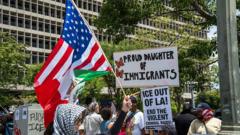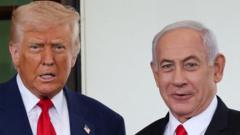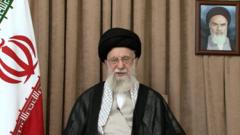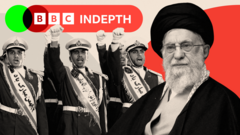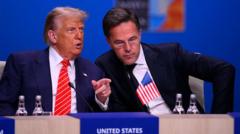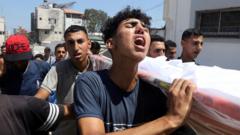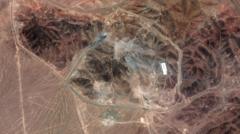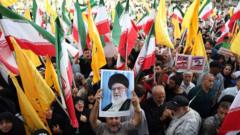President Putin's unilateral Easter truce in Ukraine, lasting only 30 hours, has sparked skepticism in Ukraine regarding its true intentions. While Russia claims adherence to ceasefire protocols, accusations of violations emerge. The situation unfolds amidst intensifying international diplomatic efforts, leaving the prospect of lasting peace uncertain.
Putin's Easter Truce: A Step Towards Peace or Just a Public Relations Stunt?

Putin's Easter Truce: A Step Towards Peace or Just a Public Relations Stunt?
Amid ongoing conflict in Ukraine, President Putin's announcement of a brief Easter truce raises questions about its sincerity as fighting continues.
In a surprising turn of events, President Vladimir Putin announced a unilateral Easter truce in Ukraine that lasts until midnight Sunday, a move that has stirred significant skepticism among Ukrainian officials and citizens alike. The Kremlin's decision came after a period of escalating conflicts, prompting questions about the sincerity of such a short-lived ceasefire.
Last month, calls for a more extended 30-day ceasefire were proposed by the Trump administration, a suggestion Ukraine was prepared to back, but Russia drowned the idea by presenting an extensive list of conditions. Ultimately, this resulted in the Kremlin opting for a mere 30-hour ceasefire during the Easter weekend, which Putin claims is rooted in humanitarian concerns.
However, this claim has not been taken at face value by Ukrainian President Volodymyr Zelensky. On social media, he expressed doubts, stating that while the Russian army is portraying a narrative of peace, they continue to engage in combat in certain regions, ostensibly to advance their military objectives.
Russia's defense ministry countered this narrative by asserting that its troops had complied entirely with the ceasefire agreement, accusing Ukraine of ongoing violations. This situation raises the question: Is Putin's announcement a genuine attempt at peacemaking or merely a strategic ploy to bolster his image, especially in light of fluctuating relations with the U.S. under Trump?
Considering diplomatic dynamics, some interpret this temporary truce as a tactical move by Putin, signaling a desire for improved relations with Washington. Following Trump's re-election, there have been growing tensions surrounding Ukraine that could pressure Putin to show some semblance of cooperation to avoid U.S. frustrations.
Nevertheless, the brief nature of the ceasefire has led some analysts to view it with cautious optimism, noting the recent uptick in international diplomatic activities designed to negotiate an end to the fighting. Trump's envoy has met with Russian officials multiple times, and discussions to negotiate peace have been happening with key international leaders, including those from Ukraine and France.
Yet, as more reports emerge regarding ongoing hostilities during this truce, the likelihood of a broader agreement remains bleak. Trump's administration has voiced their impatience over the lack of progress, further complicating the delicate situation. In light of these developments, many are left wondering whether Putin’s Easter truce will evolve into something more substantial or whether it will vanish as quickly as it appeared, leaving Ukraine to continue grappling with the ongoing conflict.




